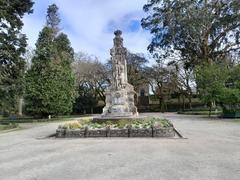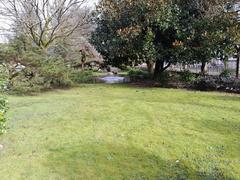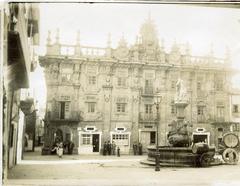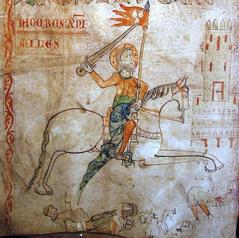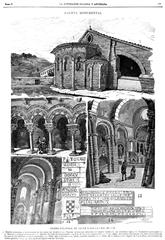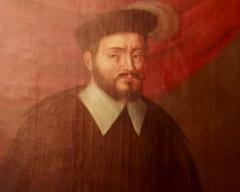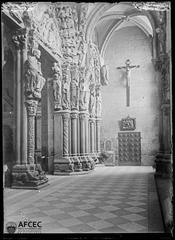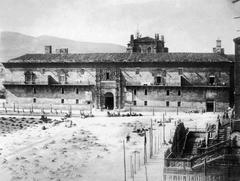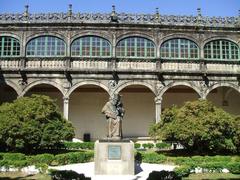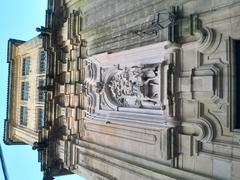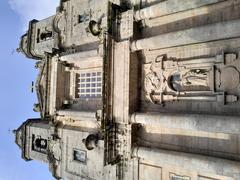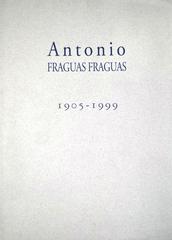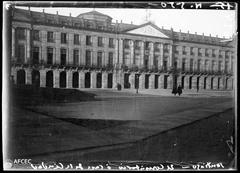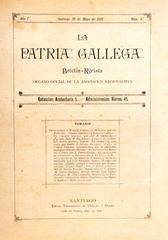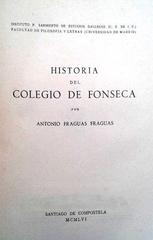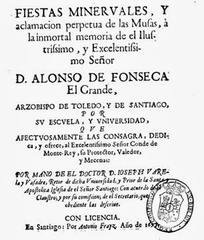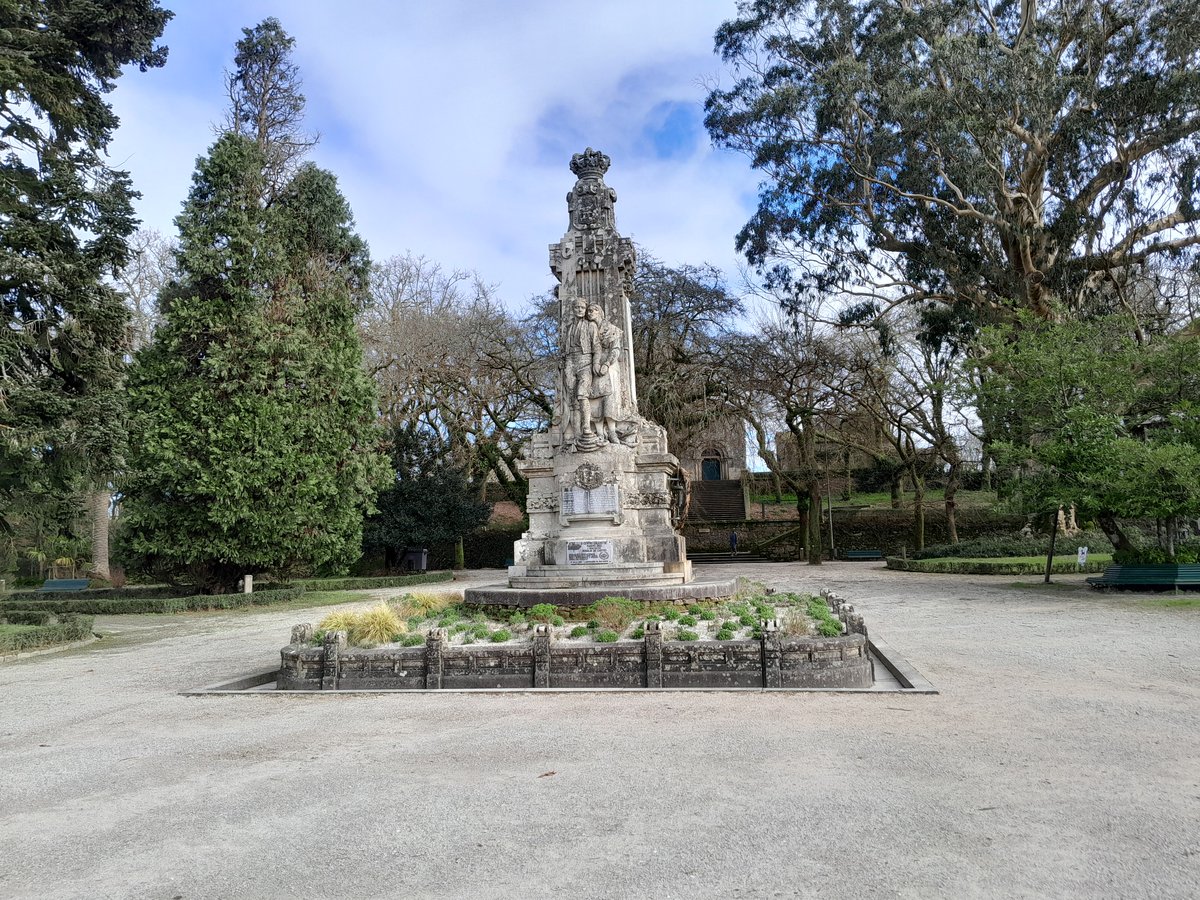
Visiting Hours and Tickets for Monument to Rosalía de Castro in Santiago de Compostela
Date: 14/06/2025
Introduction
The Monument to Rosalía de Castro in Santiago de Compostela stands as a powerful tribute to one of Galicia’s greatest literary and cultural figures. Rosalía de Castro, born in 1837 near Santiago, was a pioneering voice in the 19th-century Galician cultural renaissance, known as the Rexurdimento. Through her seminal works, especially Cantares gallegos (1863), she energized the revival of the Galician language and identity after centuries of suppression, earning her a lasting place in the region’s heart (esn-santiago.org).
Located near the historic Convent of Santo Domingo de Bonaval—where Rosalía is interred in the Pantheon of Illustrious Galicians—the monument is both a physical and symbolic link between Galicia’s past and present (spain.info). Unveiled in 1917, the sculptural ensemble not only celebrates her literary legacy but also serves as a focal point for cultural gatherings and commemorations in Alameda Park, offering panoramic views of Santiago’s old town (santiagoturismo.com).
This detailed guide provides visitors with essential information on the monument’s history, cultural significance, practical visiting details, and suggestions for enriching your experience in Santiago de Compostela.
Table of Contents
- Origins and Historical Context
- The Monument: Artistic Features and Symbolism
- Location and Setting: Alameda Park and Nearby Landmarks
- Visiting Hours and Tickets
- Accessibility and Visitor Tips
- Guided Tours and Special Events
- Frequently Asked Questions (FAQ)
- Plan Your Visit: Practical Information
- References and Further Reading
Origins and Historical Context
Rosalía de Castro and the Rexurdimento
Rosalía de Castro’s life and work embody the 19th-century Galician renaissance, the Rexurdimento, which sought to revive Galician literature and language (esn-santiago.org). Born into a society marked by linguistic and social marginalization, she overcame personal and societal barriers to become a pioneering voice for Galicia. Her poetry, particularly Cantares gallegos, is credited with reestablishing Galician as a literary language and inspiring pride in regional identity. Her works also addressed broader themes of social justice, women’s rights, and rural hardship (Wikipedia).
Creation and Inauguration of the Monument
The idea for a monument honoring Rosalía de Castro was born from broad public admiration for her legacy. After her death, a collective movement initiated fundraising and planning to erect a statue in her memory, culminating in the monument’s inauguration on July 30, 1917. The event drew prominent writers, politicians, and citizens, with speeches underscoring her enduring influence (memoriasdecompostela.blogspot.com).
The Monument: Artistic Features and Symbolism
Sculpted by Isidro de Benito and Francisco Crivillés, the monument in Alameda Park (Parque da Alameda) presents a dignified figure of Rosalía de Castro seated with a book, symbolizing her literary achievements. The base features reliefs of Galician folk figures and inscriptions of her best-known works, such as Cantares gallegos and Follas novas (santiagoturismo.com). Surrounding plaques from Galician cultural associations worldwide highlight her international impact.
The monument serves as a living symbol of Galician identity and resilience. Every February 23rd, on Rosalía’s birthday, the Día de Rosalía de Castro is celebrated with poetry readings, music, and floral tributes at the nearby Pantheon of Illustrious Galicians, with similar events held across the region (axendacultural.aelg.gal).
Location and Setting: Alameda Park and Nearby Landmarks
Alameda Park
The Monument to Rosalía de Castro is centrally located in Alameda Park, along the scenic Paseo da Ferradura. This historic green space, dating to the 16th century and expanded in the 19th, is renowned for its gardens, ancient trees, and sweeping views of Santiago’s old town and cathedral (Explorial). The park also hosts other statues and is a favored spot for locals and tourists alike.
Nearby Attractions
- Cathedral of Santiago de Compostela: Just a short walk away, this UNESCO World Heritage Site is visible from the monument.
- Praza do Obradoiro: The city’s main square, featuring historic buildings like the Hostal de los Reyes Católicos.
- Convent of Santo Domingo de Bonaval: Home to the Pantheon of Illustrious Galicians and the Museum of the Galician People (spain.info).
- Church of Santa Susana: A Romanesque gem within the park.
Visiting Hours and Tickets
- Monument and Park: Open daily, year-round, from dawn to dusk (approximately 7:00 AM to 10:00 PM, depending on season).
- Admission: Free of charge; no ticket is needed to visit the monument or park (Viajaconapina.com).
- Pantheon of Illustrious Galicians and Museum of the Galician People: Open Tuesday to Sunday, 10:00 AM to 7:00 PM. Free entry to the Pantheon; museum charges a small fee.
Accessibility and Visitor Tips
- Accessibility: Alameda Park features wide, paved pathways and flat terrain, making the monument accessible for wheelchair users and those with limited mobility. The Museum of the Galician People also offers ramps and elevators.
- Transport: The park is a short walk from Santiago’s historic center. City buses stop at nearby Porta Faxeira and Praza de Galicia. The train station is about 15 minutes away on foot.
- Amenities: Public restrooms and cafés are available near park entrances. Benches and shaded spots offer comfort for longer visits.
- Best Times to Visit: Early morning or late afternoon provides optimal lighting and fewer crowds. Spring and autumn add vibrant foliage and comfortable weather.
- Photography: The monument and balustrade along Paseo da Ferradura offer excellent panoramic views for photos.
Guided Tours and Special Events
- Guided Tours: Local tour operators often include the monument in historical and literary walking tours, sometimes as part of the “Ruta Rosaliana,” which connects sites associated with Rosalía’s life (rutarosaliana.gal).
- Special Events: Key dates include February 23rd (Día de Rosalía de Castro) and May 17th (Día das Letras Galegas), when the monument becomes the focus of poetry readings, music, and cultural celebrations (axendacultural.aelg.gal).
Frequently Asked Questions (FAQ)
Q: What are the opening hours for the monument?
A: The monument is outdoors in Alameda Park, accessible daily from dawn to dusk, typically 7:00 AM to 10:00 PM.
Q: Is there a ticket or entrance fee?
A: No, visiting the monument and park is free of charge.
Q: Are guided tours available?
A: Yes, many local operators offer tours including the monument. Special tours are often held on commemorative dates.
Q: Is the monument accessible for visitors with mobility challenges?
A: Yes, the park has paved, flat paths suitable for wheelchairs and strollers.
Q: Can I take photographs at the monument?
A: Absolutely. The location offers excellent photography opportunities, especially at sunrise or sunset.
Q: How do I get there by public transport?
A: Several city bus lines stop near Porta Faxeira and Praza de Galicia, close to Alameda Park’s entrances. Walking from the city center is also convenient.
Plan Your Visit: Practical Information
- Location: Alameda Park, Paseo da Ferradura, Santiago de Compostela, A Coruña, Spain
- GPS Coordinates: Approx. 42.8761° N, 8.5482° W (Viajaconapina.com)
- Best Nearby Attractions: Cathedral of Santiago de Compostela, Convent of Santo Domingo de Bonaval, Praza do Obradoiro, Museum of the Galician People
- Amenities: Restrooms, cafés, benches, shaded areas
For a richer experience, consider following the Rosalía Route, visiting her birthplace in Padrón, or exploring the Museum of the Galician People for more on Galician culture (padronturismo.gal).
Conclusion
The Monument to Rosalía de Castro in Santiago de Compostela is more than a commemorative statue—it is a living symbol of Galician cultural pride, literary achievement, and social progress. Set within the scenic Alameda Park and surrounded by key historical sites, it offers a tranquil and inspiring experience for visitors of all backgrounds. Whether attending a cultural event, joining a guided tour, or simply pausing to appreciate the views, a visit to this monument is a journey into the heart of Galicia’s heritage.
For the latest updates, event information, and audio guides, download the Audiala app and follow local tourism platforms. Connect with Galicia’s enduring spirit through the legacy of Rosalía de Castro.
References and Further Reading
- Visiting the Monument to Rosalía de Castro in Santiago de Compostela: Hours, Tickets, and History (2025)
- Convent of Santo Domingo de Bonaval (2025)
- How the Idea of the Monument Emerged (2013)
- Día de Rosalía de Castro 2025 (2025)
- Monument to Rosalía de Castro in Parque da Alameda (2025)
- Ruta Rosaliana: Traces of Rosalía’s Life in Compostela (2025)
- Rosalía de Castro Biography and Legacy (2025)
- Discover Santiago de Compostela in the Time of Rosalía de Castro (2021)
- Literary and Cultural Guide to Rosalía de Castro (2025)
